-
 Bitcoin
Bitcoin $105,128.3815
3.90% -
 Ethereum
Ethereum $2,416.0020
7.44% -
 Tether USDt
Tether USDt $1.0005
0.02% -
 XRP
XRP $2.1746
8.78% -
 BNB
BNB $639.2755
3.53% -
 Solana
Solana $144.4068
7.70% -
 USDC
USDC $1.0000
-0.01% -
 TRON
TRON $0.2729
1.26% -
 Dogecoin
Dogecoin $0.1628
6.63% -
 Cardano
Cardano $0.5826
7.56% -
 Hyperliquid
Hyperliquid $37.1757
6.20% -
 Sui
Sui $2.7783
11.64% -
 Bitcoin Cash
Bitcoin Cash $462.3940
2.42% -
 Chainlink
Chainlink $13.1350
11.22% -
 UNUS SED LEO
UNUS SED LEO $9.1304
0.83% -
 Stellar
Stellar $0.2476
8.34% -
 Avalanche
Avalanche $18.0617
6.94% -
 Toncoin
Toncoin $2.9043
3.64% -
 Shiba Inu
Shiba Inu $0.0...01161
7.29% -
 Hedera
Hedera $0.1515
11.26% -
 Litecoin
Litecoin $84.2187
3.78% -
 Monero
Monero $313.8446
4.70% -
 Ethena USDe
Ethena USDe $1.0006
0.03% -
 Polkadot
Polkadot $3.4344
6.81% -
 Dai
Dai $0.9999
0.00% -
 Bitget Token
Bitget Token $4.2647
5.88% -
 Uniswap
Uniswap $6.9164
11.66% -
 Pepe
Pepe $0.0...09897
10.79% -
 Pi
Pi $0.5326
6.57% -
 Aave
Aave $259.4000
13.30%
What is the significance of the sudden appearance of a long lower shadow with large volume in a downward trend?
A candle with a long lower shadow and high volume during a downtrend may signal weakening selling pressure and potential bullish reversal, especially if confirmed by follow-through and key support levels.
Jun 24, 2025 at 11:07 am
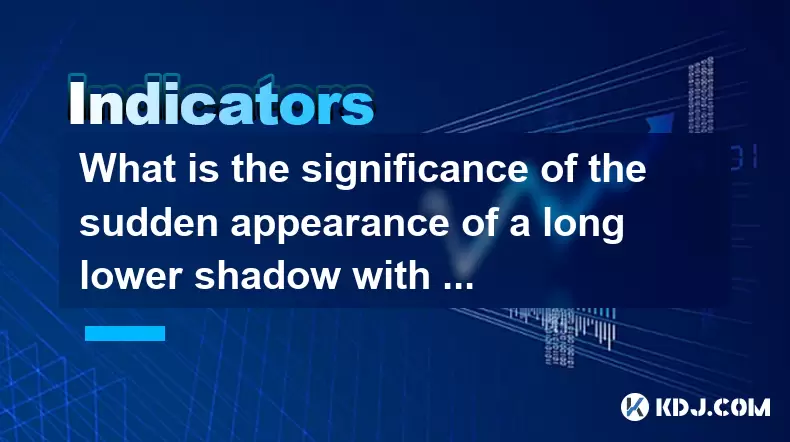
Understanding the Candlestick Pattern
In technical analysis, candlestick patterns are essential tools used by traders to interpret price action and predict future movements. One such pattern is a candle with a long lower shadow accompanied by high trading volume during a downtrend. This formation often raises questions among traders due to its potential reversal implications.
The long lower shadow, also known as a wick or tail, indicates that sellers initially pushed the price down significantly during the period. However, by the close of the candle, buyers managed to push the price back up closer to the opening level. This tug-of-war between bulls and bears suggests a possible shift in market sentiment.
Volume as a Confirmatory Signal
When this pattern appears alongside large trading volume, it becomes more significant. Volume is a measure of how many units of an asset were traded over a specific time frame. A surge in volume during the formation of a candle with a long lower shadow implies that a substantial number of participants noticed the dip and decided to buy at those lower levels.
This kind of behavior typically reflects strong support at a certain price level. In the cryptocurrency market, where volatility is common, such signals can indicate that institutional or large retail players are stepping in to accumulate assets at discounted prices. The combination of high volume and a long lower shadow suggests that the selling pressure may be weakening and that demand is increasing.
Psychological and Behavioral Aspects of Market Participants
Market psychology plays a crucial role in understanding why such a pattern occurs. During a downtrend, fear dominates investor sentiment. Traders may panic and sell off their holdings without analyzing the fundamentals or broader context. When this selling reaches a point where buyers perceive value, they start entering the market aggressively.
The long lower shadow is essentially a visual representation of this behavioral shift. It shows that even though there was heavy selling, buying interest was strong enough to pull the price back up. This psychological battle between fear and greed is especially pronounced in crypto markets due to their speculative nature and 24/7 trading environment.
How to Interpret This Signal in Crypto Trading
Traders must not treat this pattern as a standalone signal but rather as part of a broader analytical framework. Here's how one might approach interpreting this setup:
- Identify the trend: Ensure that the market is indeed in a downtrend before evaluating the significance of the candle.
- Analyze the volume profile: Check whether the volume during the candle is notably higher than average. If so, it reinforces the importance of the buying activity.
- Look for confluence: See if the candle appears near a key support level, Fibonacci retracement, or moving average. These areas increase the probability of a successful trade.
- Observe follow-through: After the appearance of such a candle, watch the next few candles to see if the bullish momentum continues.
For example, in Bitcoin or Ethereum charts, if a candle forms with a long lower shadow and unusually high volume after a multi-day decline, and it coincides with the 0.618 Fibonacci retracement level, traders may consider it a valid sign of a potential reversal.
Practical Steps for Responding to This Candlestick Signal
If you're a trader looking to act on this information, here’s a detailed guide on how to proceed:
- Mark the candle’s low and close: Determine the exact price range covered by the lower shadow and the closing price. This helps identify the strength of the rejection.
- Set entry points cautiously: Instead of jumping into a trade immediately, wait for confirmation through the next candle. For instance, if the following candle closes above the midpoint of the long-shadowed candle, it could serve as a safer entry point.
- Place stop-loss orders: To manage risk, place a stop-loss below the low of the long lower shadow. This ensures that if the price continues downward, your losses remain controlled.
- Define profit targets: Use previous resistance levels or extension tools like Fibonacci projections to set realistic take-profit zones.
Remember, even though the combination of a long lower shadow and high volume is promising, no signal guarantees success. Always combine it with other indicators like RSI, MACD, or moving averages to enhance accuracy.
Common Misinterpretations and Pitfalls
One common mistake traders make is assuming that any candle with a long lower shadow is a reversal signal. In reality, the context matters greatly. A similar candle appearing in the middle of a strong uptrend or during consolidation may not carry the same weight.
Another pitfall is ignoring the quality of volume. In some cases, volume may spike due to short-term news events or liquidation cascades rather than genuine buying interest. Therefore, it's important to assess whether the volume aligns with meaningful order flow or is just noise.
Also, traders sometimes enter positions too early without waiting for confirmation. Patience is critical in reading candlestick patterns correctly. Acting impulsively can lead to false positives and unnecessary losses.
Frequently Asked Questions
Q: Can this pattern appear in all cryptocurrencies?
Yes, the pattern can appear across all digital assets regardless of market cap or trading pair. However, its reliability tends to be higher in major coins like BTC and ETH due to deeper liquidity and more consistent volume data.
Q: How long should the lower shadow be to be considered significant?
There's no strict rule, but generally, a shadow that is at least twice the length of the real body is considered meaningful. The longer the shadow relative to the body, the stronger the potential reversal signal.
Q: Does this pattern always indicate a bullish reversal?
Not necessarily. While it often signals potential bullish momentum, the market may continue to trend downward if subsequent candles fail to confirm the reversal. It should always be evaluated within the broader context of price action and volume trends.
Q: Is this candlestick pattern useful in intraday trading?
Absolutely. Many day traders use this pattern on shorter time frames (like 15-minute or 1-hour charts) to spot quick reversals. However, due to increased noise in smaller time frames, additional filters like volume spikes or momentum divergence become even more important.
Disclaimer:info@kdj.com
The information provided is not trading advice. kdj.com does not assume any responsibility for any investments made based on the information provided in this article. Cryptocurrencies are highly volatile and it is highly recommended that you invest with caution after thorough research!
If you believe that the content used on this website infringes your copyright, please contact us immediately (info@kdj.com) and we will delete it promptly.
- XRP Price Surge: Latest News and Analysis – Can XRP Reach New Heights?
- 2025-06-24 20:45:12
- Stablecoin Surge in South Korea: Kakao Pay's Venture and the Stock Rally
- 2025-06-24 20:25:13
- Unstaked Presale Heats Up as SHIB Evolves & Toncoin GameFi Takes Aim
- 2025-06-24 21:05:12
- DOT Miners, Middle East, and Investors: Navigating Uncertainty
- 2025-06-24 20:25:13
- Bitcoin Purchasing in 2025: A New Yorker's Guide to the Crypto Craze
- 2025-06-24 21:05:13
- Blockchain Stocks, Decentralized World, and Profit: Navigating the Future of Finance
- 2025-06-24 21:25:12
Related knowledge
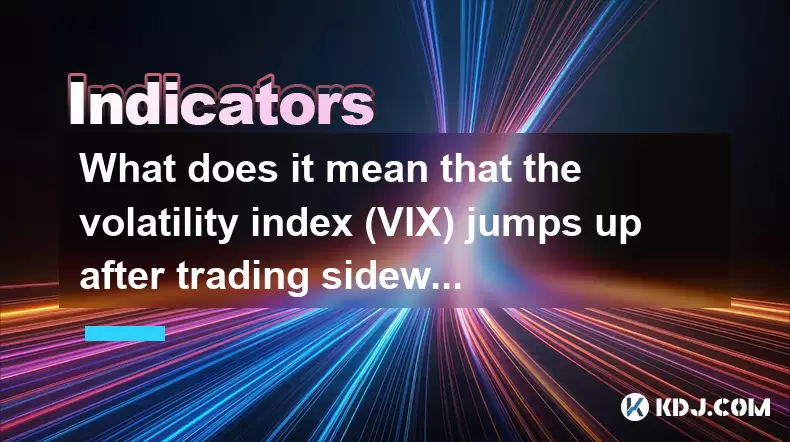
What does it mean that the volatility index (VIX) jumps up after trading sideways at a low level?
Jun 24,2025 at 09:35pm
Understanding the Volatility Index (VIX)The Volatility Index (VIX), often referred to as the 'fear gauge,' is a real-time market index that represents the market's expectation of 30-day forward-looking volatility. It is calculated by the Chicago Board Options Exchange (CBOE) based on the price inputs of S&P 500 index options. In the context of cryptocur...

What does it mean when the stochastic indicator repeatedly fluctuates at the 50 horizontal line?
Jun 24,2025 at 09:08pm
Understanding the Stochastic Indicator in Cryptocurrency TradingThe stochastic indicator is a popular momentum oscillator used by traders to identify potential trend reversals and overbought or oversold conditions. In cryptocurrency trading, where price movements can be highly volatile, understanding how this tool behaves becomes crucial for making info...
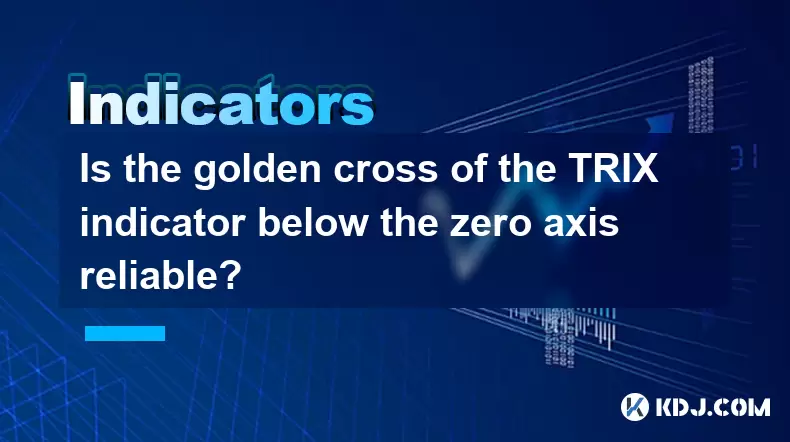
Is the golden cross of the TRIX indicator below the zero axis reliable?
Jun 24,2025 at 09:22pm
Understanding the TRIX Indicator and Its SignificanceThe TRIX (Triple Exponential Moving Average) indicator is a momentum oscillator used in technical analysis to identify oversold or overbought conditions, as well as potential trend reversals. It is calculated by smoothing price data three times using exponential moving averages and then taking the per...
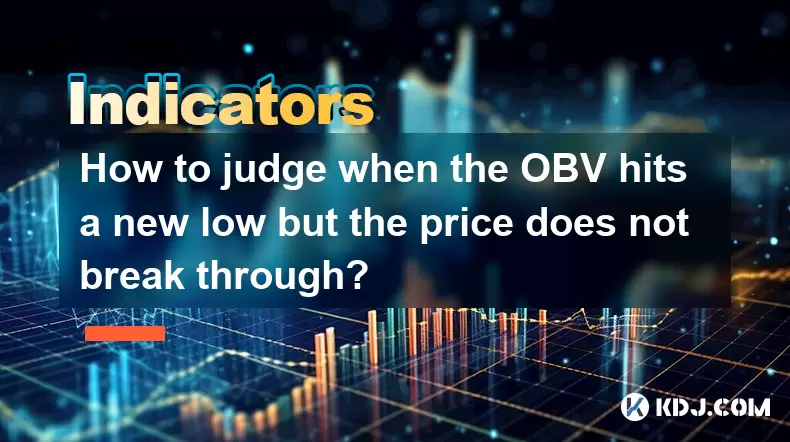
How to judge when the OBV hits a new low but the price does not break through?
Jun 24,2025 at 07:56pm
Understanding the Basics of OBV and Price ActionOn-Balance Volume (OBV) is a momentum indicator that uses volume flow to predict changes in stock or cryptocurrency prices. The core principle behind OBV is that volume often precedes price movement. When OBV hits a new low, but the price does not break through its previous support level, this can indicate...
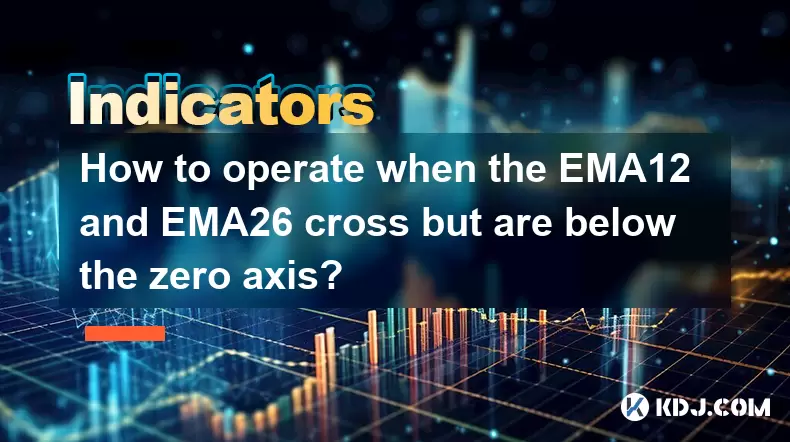
How to operate when the EMA12 and EMA26 cross but are below the zero axis?
Jun 24,2025 at 10:00pm
Understanding the EMA12 and EMA26 Crossover SignalWhen trading in the cryptocurrency market, technical indicators such as Exponential Moving Averages (EMAs) are widely used to identify potential trend reversals or continuations. The EMA12 and EMA26 crossover strategy is a popular method among traders, especially when combined with other momentum indicat...
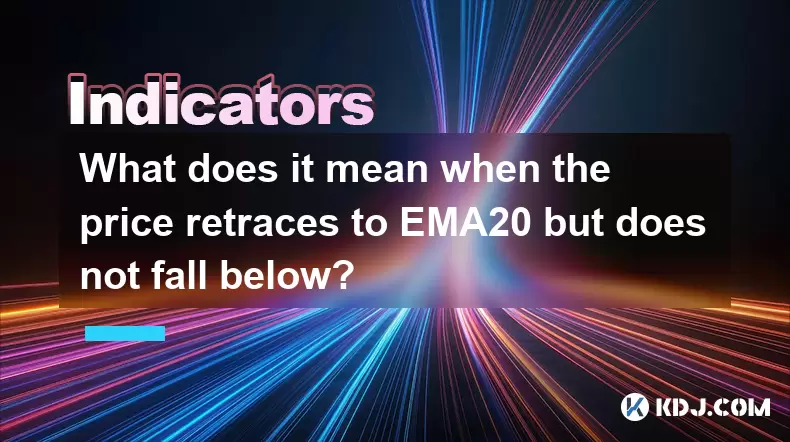
What does it mean when the price retraces to EMA20 but does not fall below?
Jun 24,2025 at 08:49pm
Understanding the EMA20 Indicator in Cryptocurrency TradingThe Exponential Moving Average (EMA) with a 20-period setting, commonly referred to as EMA20, is one of the most widely used technical indicators in cryptocurrency trading. It gives more weight to recent price data, making it more responsive to current price movements compared to simple moving a...

What does it mean that the volatility index (VIX) jumps up after trading sideways at a low level?
Jun 24,2025 at 09:35pm
Understanding the Volatility Index (VIX)The Volatility Index (VIX), often referred to as the 'fear gauge,' is a real-time market index that represents the market's expectation of 30-day forward-looking volatility. It is calculated by the Chicago Board Options Exchange (CBOE) based on the price inputs of S&P 500 index options. In the context of cryptocur...

What does it mean when the stochastic indicator repeatedly fluctuates at the 50 horizontal line?
Jun 24,2025 at 09:08pm
Understanding the Stochastic Indicator in Cryptocurrency TradingThe stochastic indicator is a popular momentum oscillator used by traders to identify potential trend reversals and overbought or oversold conditions. In cryptocurrency trading, where price movements can be highly volatile, understanding how this tool behaves becomes crucial for making info...

Is the golden cross of the TRIX indicator below the zero axis reliable?
Jun 24,2025 at 09:22pm
Understanding the TRIX Indicator and Its SignificanceThe TRIX (Triple Exponential Moving Average) indicator is a momentum oscillator used in technical analysis to identify oversold or overbought conditions, as well as potential trend reversals. It is calculated by smoothing price data three times using exponential moving averages and then taking the per...

How to judge when the OBV hits a new low but the price does not break through?
Jun 24,2025 at 07:56pm
Understanding the Basics of OBV and Price ActionOn-Balance Volume (OBV) is a momentum indicator that uses volume flow to predict changes in stock or cryptocurrency prices. The core principle behind OBV is that volume often precedes price movement. When OBV hits a new low, but the price does not break through its previous support level, this can indicate...

How to operate when the EMA12 and EMA26 cross but are below the zero axis?
Jun 24,2025 at 10:00pm
Understanding the EMA12 and EMA26 Crossover SignalWhen trading in the cryptocurrency market, technical indicators such as Exponential Moving Averages (EMAs) are widely used to identify potential trend reversals or continuations. The EMA12 and EMA26 crossover strategy is a popular method among traders, especially when combined with other momentum indicat...

What does it mean when the price retraces to EMA20 but does not fall below?
Jun 24,2025 at 08:49pm
Understanding the EMA20 Indicator in Cryptocurrency TradingThe Exponential Moving Average (EMA) with a 20-period setting, commonly referred to as EMA20, is one of the most widely used technical indicators in cryptocurrency trading. It gives more weight to recent price data, making it more responsive to current price movements compared to simple moving a...
See all articles
























































































